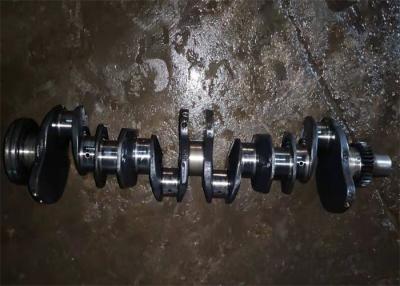






| Price | Negotiatied |
| MOQ | Negotiable |
| Delivery Time | 5 - 8 work days |
| Brand | Cateripllar |
| Place of Origin | USA |
| Model Number | 3306 |
| Packaging Details | Neutral Package or Fumigation Free |
| Payment Terms | D/P, T/T |
| Supply Ability | 5 pieces |
| Place of Origin | USA | Engine code | 3306 |
| Packaging Details | Neutral Package or Fumigation Free | Color | Same as pictures |
| Excavator model | E330B | Model Number | 3306 |
| Supply Ability | 5 pieces | Car model | For cat |
| Weight | 87kg | Brand Name | Cateripllar |
| Payment Terms | D/P, T/T | Type | Crankshaft |
| Price | Negotiatied | Delivery Time | 5 - 8 work days |
| Application | Car, Truck, construction machine |
3306 Second Hand Crankshaft 4N7696 For Excavator E330B Original
Specification
| Prouduct | Engine Crankshaft |
| Brand Name | CAT |
| Part number | 4N7696 |
| Engine type | Diesel |
| Condition | Original Used |
| Excavator code | E330B |
| Size | Standard Size |
| Cooling | Water cooling |
Description
What are the parts of a crankshaft?
The crankshaft is the main rotating component of an engine and is commonly made of ductile iron. Features of a crankshaft include the crankpin journal, throw, bearing journals, counterweights, crankgear, and a power take-off.
What are materials used for crankshaft in excavator engine?
Crankshafts
are
made
from
forged
steel
or
cast
iron.
Crankshafts
for
high-volume,
low-load
production
vehicles
are
generally
constructed
from
nodular
cast
iron,
which
has
high
strength.
Fuel-efficient
engines
require
a
high
power-to-displacement
ratio,
which
has
increased
the
use
of
forged
crankshafts.
How a crankshaft is manufactured?
How
a
crankshaft
is
made
Most
production
engines
use
a
cast
iron
crankshaft
which
is
made
by
pouring
molten
iron
into
a
mould.
Forged
crankshafts
are
used
in
some
performance
engines.
A
forged
crankshaft
is
made
by
heating
a
block
of
steel
until
red
hot,
and
then
using
extremely
high
pressure
to
form
it
into
shape.
The function of the crankshaft in engine?
The engine torque is not continuous because it’s produced only when each piston is on expansion cycle. Due to this a flywheel is mounted onto the crankshaft in order to smooth the engine torque and reduce vibrations.
On V-type engine on the same conrod journals, two connecting rods are mounted. Because of this arrangement, a V-engine, for the same number of cylinder, is more compact than a straight engine.
Between the crankshaft and the engine block, on the main journals, crankshaft bearings are fitted. Their role is to reduce friction through a layer of anti friction material which comes into contact with the engine block mounts.
Two types of crankshaft are produced, cast and forged. The counterweights can be also forged directly onto the crankshaft or bolted-on (fixed with threaded bolts).
All the pistons of the internal combustion engine are transmitting their forces to the crankshaft. From the mechanical point of view, the crankshaft has to withstand high torsional forces, bending forces, pressures and vibrations.
For any questions or observations regarding this tutorial please use the comment form below.



